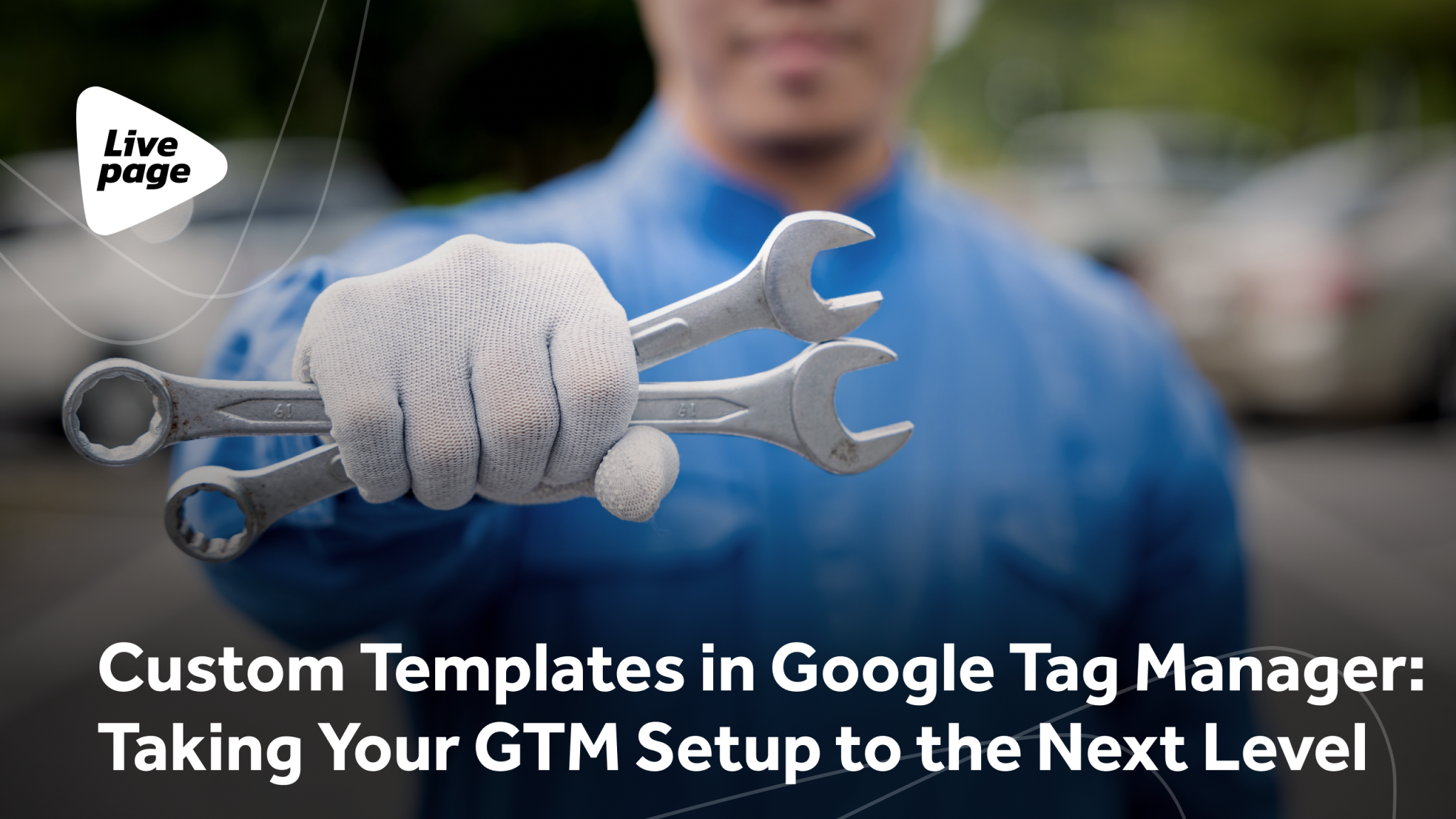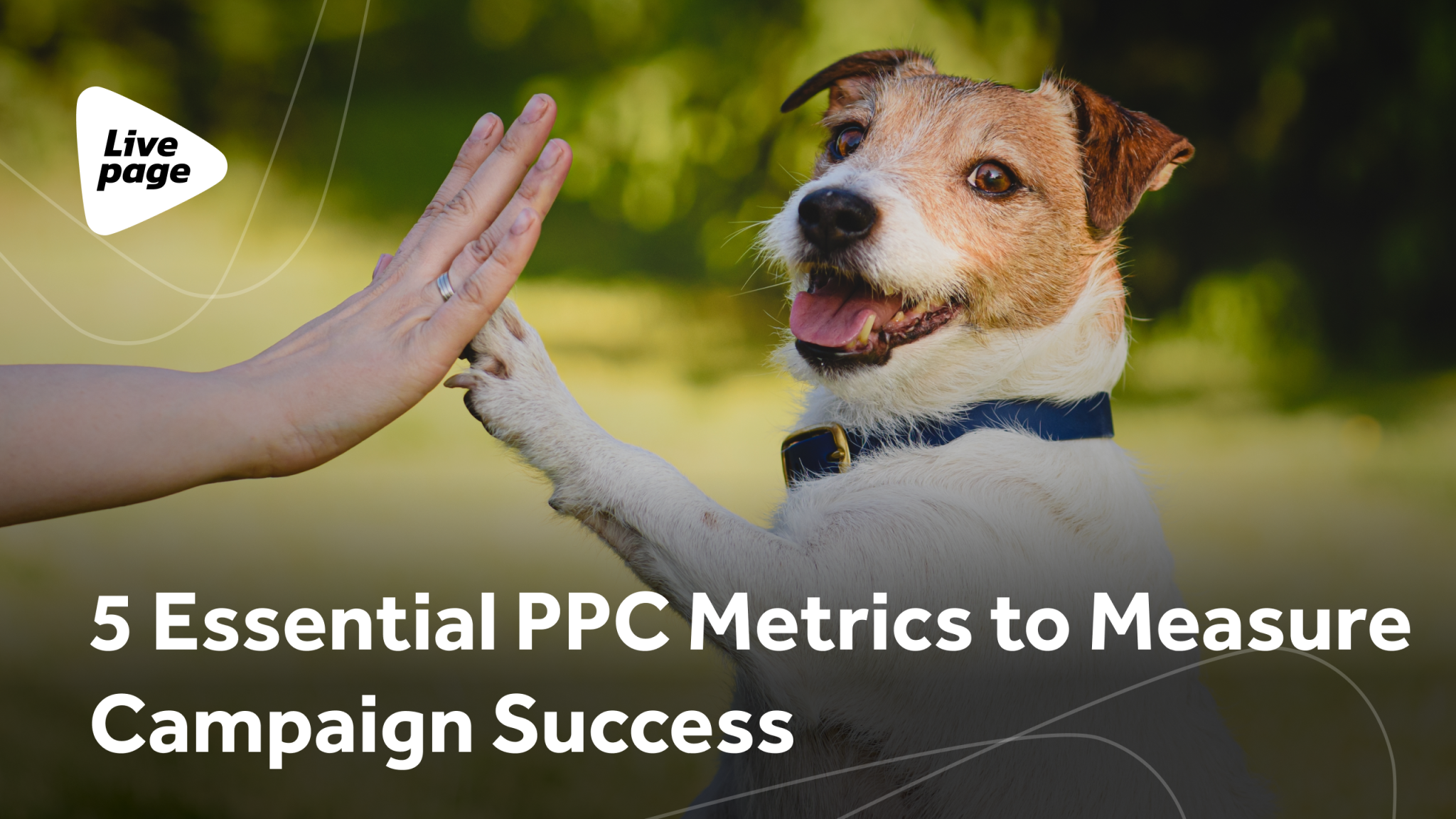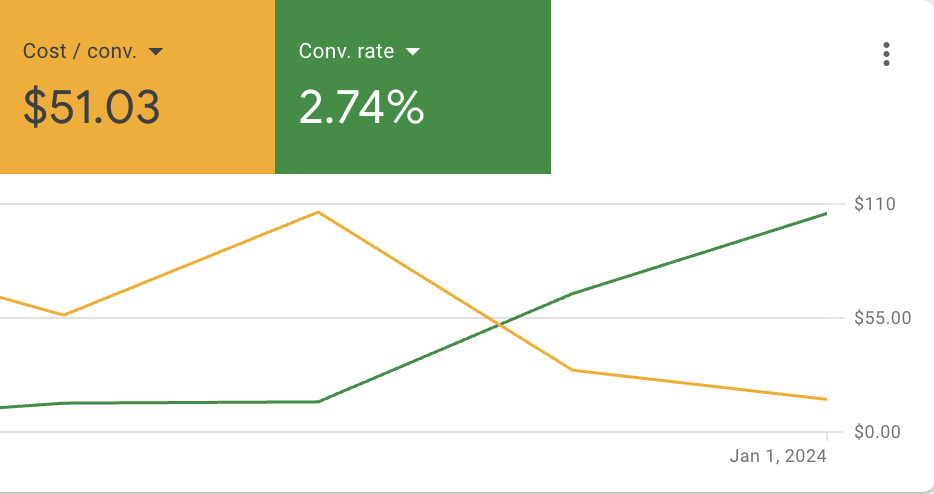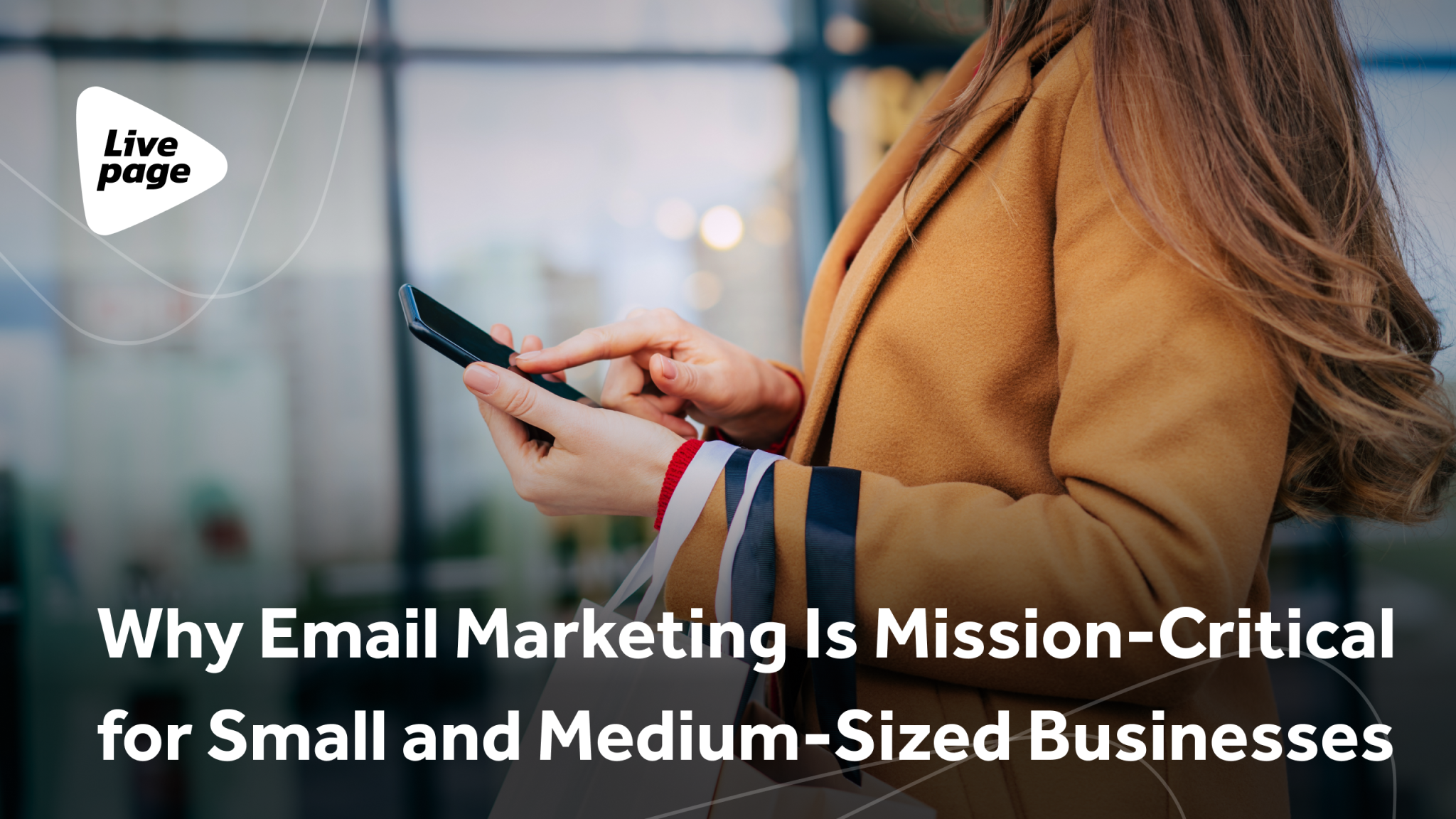
5 Essential PPC Metrics to Measure Campaign Success

In today’s world, where online advertising is crucial in business, understanding and effectively using key PPC performance metrics is vital for assessing your campaign. In this article, we’ll break down the most important metrics to measure PPC content for advertising, such as conversions and conversion count, conversion rate (CR), cost per action (CPA), cost per install (CPI), and return on ad spend (ROAS). We’ll look at these not just as abstract numbers but as tools that help you better understand and optimize your advertising strategies.
1. Conversion count
This is the first and most essential PPC metric you need to track to measure the effectiveness of your campaigns. After all, the main goal of advertising is to drive conversions. But what exactly counts as a “conversion”? Is every action on your website considered as such? Let’s break it down.
A conversion in advertising is one of the PPC metrics that refers to any action you want the user to take after clicking your ad. It can be any action deemed valuable to your business. It can be filling out a form, downloading an offer, making a purchase, downloading an app, etc. For an online store, a conversion is typically a purchase. However, for other types of businesses, it can get a bit more complex. For example, there are lead generation conversions, where your goal is to collect information from site visitors (email, phone number, etc.). These types of conversions establish a connection between a potential customer and your business. This connection is often made through filling out a form on a landing page, signing up for a newsletter or blog, or making an inquiry or phone call. Essentially, anything that ties a potential customer or subscriber to your business can be considered a lead.
If your campaigns focus on raising brand awareness, you’ll need to dig deeper to define which user actions are most important to you. For example, it could be viewing a particular page, watching a video, or downloading a file. If you are running branding campaigns and your goal is to convey a key value or message to the user, you must clearly define which user action will confirm that your message has been received. That specific action will be your conversion.
So, the first step when planning an ad campaign is to define what you want to achieve as a result. Then, based on the number of conversions you get, you can determine whether you are meeting your goals.
2. Conversion rate (CR)
As we mentioned earlier, a conversion can be any action that you find valuable for your business. The conversion rate (CR) is the ratio between users who completed the desired conversion action and those who simply clicked on your ad.
The conversion rate is an important PPC performance metric that shows how often a conversion happens relative to the number of clicks. In simpler terms, it’s the ratio of clicks that turn into conversions, and it’s typically displayed in your ad dashboard as a percentage.
How important is the conversion rate?
It’s one of the most critical pay-per-click metrics. This figure is a key indicator of any conversion-focused ad strategy or return-on-investment (ROI) campaign. If your conversion rate is low, it means numerous clicks aren’t resulting in conversions, and your ad spend might not yield the results you want.
If you notice a low conversion rate, ask yourself the following questions:
- Are my ad creatives clear and not confusing?
- Is it reaching the proper audience?
- Are the steps on my landing page simple and easy to follow?
- Is the customer journey on the site straightforward?
- Why are users starting the conversion process but not completing it?
- Are there any difficulties with filling out forms or providing information?
The conversion rate helps us understand whether the people who click on our ads are ready to convert, or if they are getting confused or hesitating once they reach the website.
What is a good conversion rate?
There is no correct answer. Obviously, the higher, the better. But it’s hard to pin down a universal number. To get an idea of what a solid conversion rate (CR) is for your business, you’ll want to look at benchmarks in your industry. They’ll give you a rough idea of what to aim for. Still, you’ll only figure out what a good conversion rate is for you once you have some ad campaign stats to analyze.
How to boost your conversion rate
There are tons of tips out there for improving conversion rates, and that’s because what works can vary a lot depending on the industry, audience, and location. It’s a playground for ad specialists to experiment with. But here are a few pretty universal tips:
- Use clear calls to action (CTAs) in your ads. Let your audience know exactly what you want them to do. This not only attracts the right crowd — whether it’s to buy, download, or sign up — but also sets the expectation for what they’ll find on your landing page.
- Optimize your landing page. Getting users to your site is only half the battle. Your landing page needs a clear, standout CTA. Make sure forms and buttons are easy to find and use. Also, pay attention to the devices your audience is using. If most of your traffic is coming from mobile, make sure your page is optimized for mobile users.
- Try different bidding strategies. Bidding strategies can have a big impact on your conversion rate. Experiment with both manual and automated strategies. For example, the Maximize Conversions strategy in Google Ads adjusts bids to get you the most conversions for your budget. Most ad platforms have similar options.
- Track more actions. If your conversion rate is low but traffic is decent, you need to understand what users are actually doing on your site. Track more events, like clicks on contact info, product page views, adding items to the cart, etc. This gives you a clearer picture of the customer journey and helps identify drop-off points. This will help you identify non-obvious obstacles in the customer journey. Fixing those can lead to a better conversion rate.

3. Cost per action (CPA)
This key PPC performance metric shows the total number of conversions in relation to your total spend. For most advertisers, CPA is usually considered one of the most important the most PPC metric, if not the most important. It tells you what you are getting for the money you are putting into advertising.
However, if you run an e-commerce account, you might be more interested in ROAS (return on ad spend) than CPA. ROAS is another revenue-tracking PPC campaign metrics closely related to CPA, which we’ll talk about later.
CPA = Advertising spend / Conversion count
Where:
Advertising spend is the amount of money an advertiser spends on their campaign.
Conversion count is how many times users performed the desired action.
What is a good CPA?
There is no definitive answer or average for what makes a good CPA because conversion could mean anything depending on your business goals.
How to lower your CPA
Lowering your cost per action is no quick task. It requires deep analysis and strategic decisions. Our paid ad specialists at PPC remarketing agency Livepage are always here to help. But here are a few quick and helpful tips to reduce your CPA right now:
- Reallocate your budget. Take a bird’s-eye view of your account. You might have certain keywords, audiences, or locations soaking up a lot of budget without delivering results. Adjusting these problem areas can help lower your CPA.
- Adjust your cost per click (CPC). If you have set a target CPC in your bidding strategy, try adjusting it to be more realistic. Your CPC might be high because of automated bidding. If you don’t have enough data in your campaigns or if your goals are off, your ad performance can be inconsistent in automated strategies. Since click costs directly affect your CPA, bringing in cheaper clicks will help lower them.
- Cut the budget. A smaller budget means lower spending. Remember, two things affect your CPA: total spending and conversion count. Getting more conversions will cost you more money and time. However, trimming your budget immediately reduces your spending, which can lower your CPA in the short term.
4. Cost per install (CPI)
Similar to the cost per action, cost per install (CPI) is a PPC marketing metric used specifically for promoting mobile apps and determines the cost of each app installation.
CPI is a fixed amount that an advertiser pays to the ad network (like Google, Meta, etc.) for every app installation by a user. It’s a core metric for mobile apps that helps assess advertising budgets.

CPI = Advertising spend / Install count
Where:
Advertising spend is the amount of money an advertiser spends on their campaign.
Install count is the number of times the app was downloaded and installed by users.
For example, if you spend $1,000 on mobile ads for your app and your campaign brings in 200 installs, your cost per install would be $5.
If you are selling something through your app, you’ll also want to track the average revenue per user (ARPU). When running app campaigns, specialists track CPI alongside ARPU.
to ensure the revenue earned from each user exceeds the cost of acquiring them.
Since CPI only tracks how many new users you bring in, you should also monitor other metrics, like user engagement and session duration, to keep an eye on the churn rate.
What is a good CPI?
Just like with conversion costs, there is no one-size-fits-all ideal CPI. However, benchmarks for apps do exist, giving you a rough idea to help plan your ad campaigns.
How to lower your CPI
- Boost ad click-through rate (CTR). A low CTR means fewer chances for conversions, and it may even lead to your ad not being shown in the future. CTR is partly based on relevance. If your CTR is low, it suggests users prefer your competitors. To improve relevance, your ad keywords should match the descriptions of your app in the app stores. Similar to keywords and landing pages in search campaigns, here, the landing page is the app store listing (Apple App Store, Google Play Store).
- Improve conversion rate (CR). One way to do this is by testing different ad copies, images, and videos. A/B test your ads and explore creative approaches to find what resonates best with your audience and delivers the most cost-effective results.
- Increase app ratings. More 5-star reviews mean more installs. Plus, higher app ratings increase your chances of being promoted by Apple or Google.
5. Return on ad spend (ROAS)
ROAS is the key PPC metric for e-commerce campaigns and Performance Max campaigns using product feeds. Like cost per conversion, ROAS tracks the overall revenue generated by your ads, comparing that revenue to your ad spend. ROAS = Total revenue from campaign / Total ad spend ROAS doesn’t account for profit margins from the product.
What is a good ROAS?
A good ROAS depends on your company’s goals and business model. For example, a ROAS of 5:1 means that for every dollar spent on ads, the company makes $5 in revenue. Keep in mind, though, that the ideal ROAS can vary for different types of campaigns and target markets.
How to improve ROAS
ROAS is an important PPC metric that helps determine the efficiency of your ad spend and provides insights into how to improve it:
- Ad profitability: ROAS shows how effectively your ad spend is transforming into revenue. You can improve this metric by optimizing and refining your ad strategies.
- Campaign/ad efficiency: Analyzing ROAS helps identify which campaigns, ad groups, or specific ads are the most successful, allowing you to focus your efforts on what’s working best.
- Budget reallocation: ROAS is also a tool for smart budget allocation, helping you optimize resources and raise your ROAS.
However, keep in mind that ROAS ignores ad attribution. It doesn’t factor in the entire journey from seeing the ad to making the purchase.
Also, optimizing ROAS is an ongoing process. You should continuously tweak your campaigns based on results and market changes. Need help with that? Don’t know how to assess your campaign and what PPC campaign metric to pay attention to? Livepage experts can guide you, as they have extensive experience in boosting e-commerce success.
ROAS or ROMI?
These two metrics in Google Ads often get mixed up, causing some confusion. Let’s clear it up.
ROMI stands for return on marketing investment, and it measures the profitability of all marketing efforts, while ROAS focuses just on advertising. When it comes to evaluating ad campaigns in a platform like Google Ads, ROAS is more convenient. That’s because platforms don’t have insight into your broader business expenses beyond what you spend directly on ads.
One big advantage of using ROAS is its simplicity — it’s a quick and easy way to assess the performance of your ad campaigns. Both metrics are valuable metrics to measure a PPC campaign success, but ROAS is more specialized, while ROMI gives you the bigger picture by taking into account all marketing expenses.
Wrapping up
For your campaigns to work effectively, you need to keep a close eye on them. Analyze Google Ads metrics, spot trends, and optimize their performance regularly, which audit Google Ads and PPC audit services can help you with. With the rise of AI and machine learning in ad systems, some of this process has gotten easier, but it still requires human oversight. Any advertiser, business owner, or marketer needs to know what top PPC metrics are, how to interpret data and improve performance, such as using a PPC company for SaaS. This is where Livepage comes in. Our paid advertising agency specialize in analyzing and optimizing ad campaigns, and can provide high-quality PPC campaign management services. Contact us, and let’s maximize your ad efficiency together.




















